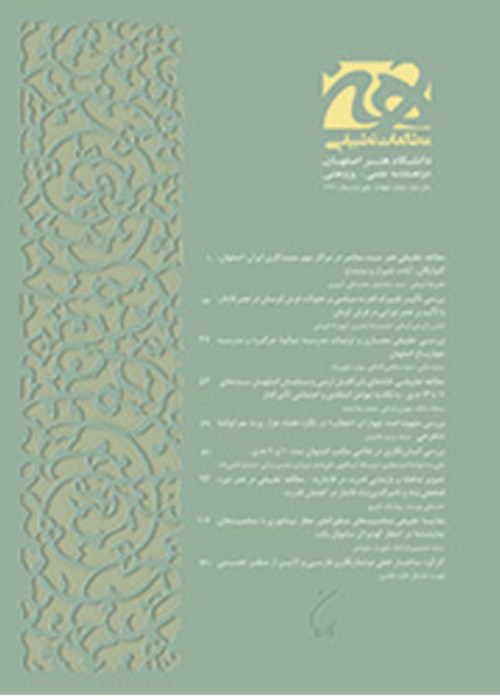The Study of 5 Selected Works of 9th to 11th Century AD Nishapur Pottery Comparing with Minimalism Ideas
Author(s):
Abstract:
Among multiple discovered Nishapur pottery works of 9th to 11th century AD, there are samples which differ from the others in aesthetic aspects. Their creators may have followed other aesthetic rules presumably. In these cases, there are not lots of ornamentation, vibrant colors and prevalent motifs of their period. And also empty spaces and a kind of stillness play an important role in them unlike previous ones. In short, minimalist characteristics have been applied in their embellishment. The 5 pottery works which are selected by purposive sampling and compared with the ideas of minimalism in this study are selections of this Nishapur potteries group which indicate the aforementioned characteristics. In this article, which has been done through descriptive-analytical method with comparative approach, it is tried to answer this question that whether the Nishapur selected pottery works correspond with aesthetic features of minimalism. The researchers classified the ideas of minimal art on the basis of Loredana Parmesanis thoughts at first into 18 and then into 10 categories and then provided a self-made questionnaire based on Delphi method of sampling and distributed them among 5 art faculty members of Shahed University in order to determine the amount of correspondence between these pottery works and minimalism ideas. Afterwards, the percentage of correspondence was presented by quantifying the information. The results of this study clarify that the amount of correspondence between these pottery works and minimalism ideas is significant and about 78% to 84%. Therefore, they can be considered as minimalist artworks about 900 years before minimalism emergence. It is necessary to mention that all of the 10 properties dont exist even in very famous minimalism works entirely. Considering this 900-year difference between these two phenomena indicated that the reasons of this similarity have mutual ideas, similar aesthetic rules and tendency to simplification and reduction. The results also indicated that among the minimalism Ideas, 2 properties of simple form and non-use of multiple forms simultaneously and minimum color exist more in the samples with one hundred percentage. The results also emphasize on the importance and necessity of recognition of Iranian culture and art in order to identify its aesthetic criteria.
Keywords:
pottery , Nishapur , minimalism , aesthetic
Language:
Persian
Published:
Journal of Motaleate-e Tatbighi-e Honar, Volume:6 Issue: 12, 2017
Pages:
111 to 122
magiran.com/p1664346
دانلود و مطالعه متن این مقاله با یکی از روشهای زیر امکان پذیر است:
اشتراک شخصی
با عضویت و پرداخت آنلاین حق اشتراک یکساله به مبلغ 1,390,000ريال میتوانید 70 عنوان مطلب دانلود کنید!
اشتراک سازمانی
به کتابخانه دانشگاه یا محل کار خود پیشنهاد کنید تا اشتراک سازمانی این پایگاه را برای دسترسی نامحدود همه کاربران به متن مطالب تهیه نمایند!
توجه!
- حق عضویت دریافتی صرف حمایت از نشریات عضو و نگهداری، تکمیل و توسعه مگیران میشود.
- پرداخت حق اشتراک و دانلود مقالات اجازه بازنشر آن در سایر رسانههای چاپی و دیجیتال را به کاربر نمیدهد.
In order to view content subscription is required
Personal subscription
Subscribe magiran.com for 70 € euros via PayPal and download 70 articles during a year.
Organization subscription
Please contact us to subscribe your university or library for unlimited access!



